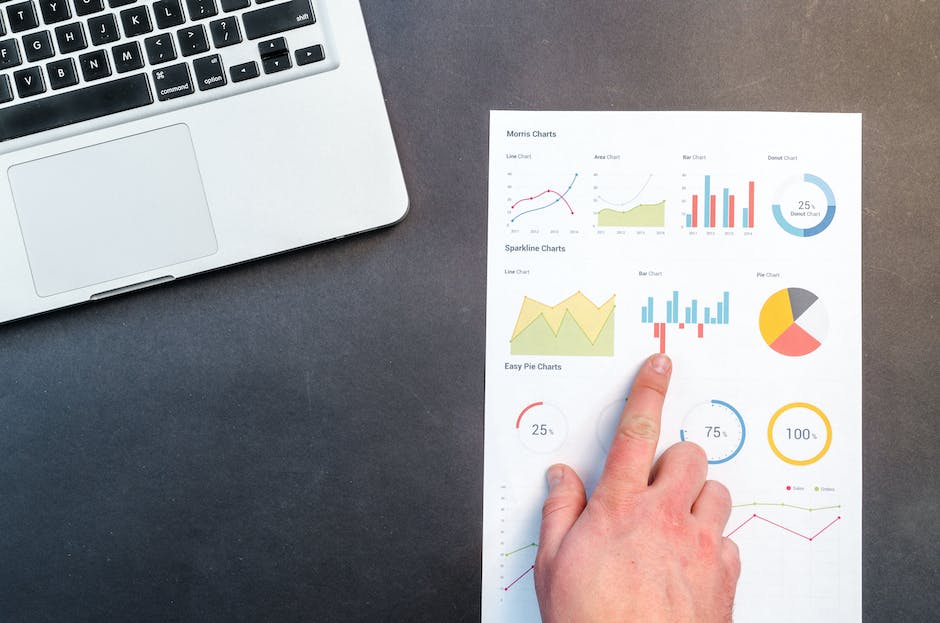As technology advances and data continues to grow, the need for data visualization is more evident than ever. Data visualization is a graphical representation of data that aids in understanding complex datasets and contributes significantly to decision making. It’s a crucial aspect of tech jobs today and this blog post will provide a detailed overview of some of the top tools used for data visualization.

Understanding Data Visualization
Data visualization is more than just creating fancy charts or graphs. It’s about translating raw, complex data into visual formats that are easy to understand. This process allows for the detection of patterns, trends, and insights that might be missed when reviewing text-based data.
Through data visualization, a large amount of data can be condensed into simple visuals, making it easier to process, understand, and gain insights from. This ensures that the data is accessible to a wider audience, enabling more people to participate in data-driven decision-making processes.
The Importance of Data Visualization in Tech Jobs
In the tech industry, data is the driving force behind most decisions. Hence, the ability to visualize data effectively is a highly sought-after skill. Data visualization plays a pivotal role in data-driven decision making, problem-solving, and communication in various tech roles.
It allows professionals to present complex data in a clear, concise manner, making it easier for stakeholders to understand and make informed decisions. Furthermore, it aids in identifying patterns, trends, and correlations that might go unnoticed in text-based data, leading to more effective strategies and solutions.
Factors to Consider When Choosing a Data Visualization Tool
When choosing a data visualization tool, it’s not as simple as picking the first one that pops up in your search results. Various factors come into play. How user-friendly is the tool? What customization options does it offer? How does it integrate with other tools you’re using? And of course, how much does it cost? These are some of the critical questions to ask yourself as you evaluate different options.
Understanding these considerations can significantly enhance your decision-making process, ensuring you choose a tool that not only meets your current needs but also aligns with your long-term goals. Let’s examine these factors more closely.
User-friendly Interface
Have you ever used a tool that seemed more like a puzzle than a solution? An intuitive, user-friendly interface is a crucial aspect of any data visualization tool. Why? Because it dramatically impacts the speed and efficiency with which you can accomplish your tasks.
The tool should be easy to navigate, even for those without extensive technical knowledge. Imagine having to spend countless hours learning how to use a tool when that time could be spent analyzing and interpreting your data. Doesn’t sound very productive, does it?
Customization Options
One size doesn’t fit all, especially in the world of data visualization. Different datasets require different forms of visualization to convey the message effectively. Therefore, a good data visualization tool should provide a wide range of customization options to tailor visuals according to your specific needs.
Whether you need bar charts, scatter plots, heat maps, or any other types of visualizations, the tool should be versatile enough to support them. Additionally, the ability to customize colors, labels, sizes, and other elements can add clarity and depth to your visuals, making them more engaging and easy to understand.
Incorporating Data Visualization Tools into Your Tech Career
Data visualization skills have become integral in the tech industry. Learning and using these tools can significantly enhance your career prospects. But how?
Firstly, adding data visualization tools to your resume can make you stand out in the job market. It highlights your ability to present complex data in a simplified, visual format, a skill highly sought after by employers.
Secondly, these tools can aid in problem-solving at work. Visual representations of data can reveal patterns and trends that may not be immediately apparent in raw, text-based data. This ability to uncover insights can prove invaluable in decision making, strategy planning, and understanding user behavior.
Finally, these tools can enhance your communication skills. They allow you to present data in a way that’s easy for both technical and non-technical team members to understand, promoting better collaboration and decision-making within the team.
So, are you ready to boost your tech career with data visualization tools?
Recommended Data Visualization Tools
There’s a plethora of data visualization tools available today, each offering unique features and catering to different levels of expertise. Whether you’re a beginner seeking simplicity or a seasoned professional looking for advanced capabilities, we’ve got you covered.
Starting off with a tool that’s renowned in the field, Tableau is a top choice for many. It’s user-friendly, making it ideal for beginners, yet still offers powerful, comprehensive features for advanced users. Next, Microsoft Power BI stands out for its seamless integration with other Microsoft products, and its robust data modeling and reporting capabilities.
On the other hand, QlikView offers a unique associative data model that allows users to explore all possible associations in their data, rather than forcing them to query based on pre-defined hierarchies. And for those with coding skills, D3.js offers unparalleled flexibility and power. Finally, Google Charts is a reliable, free tool that’s perfect for creating simple, effective visuals.
Features and Benefits of Each Tool
Now that we’ve introduced these tools, let’s dive deeper into what makes each of them unique.
Tableau is known for its intuitive drag-and-drop interface, which makes it easy to create complex visuals. It also has the ability to connect to a variety of data sources, from Excel spreadsheets to SQL databases, and even big data platforms like Hadoop.
Microsoft Power BI, on the other hand, excels in data connectivity and transformation. It allows you to transform raw data into meaningful insights with its powerful data modeling capabilities. Additionally, its integration with Microsoft products means that users can easily import data from Excel, Azure, and SQL Server.
QlikView’s associative data model is its standout feature. It allows users to explore data freely without being limited by predefined hierarchies or relationships, leading to more comprehensive insights. D3.js, though requiring a steeper learning curve, gives developers deep control over the final visual result. And Google Charts, while simpler than the others, provides an array of chart types and is highly customizable and easy to implement.
Learning Resources and Tutorials for Each Tool
Ready to get started with these tools? Here are some resources to help you on your journey.
Tableau offers a comprehensive learning platform, Tableau eLearning, where you can find self-paced, interactive lessons. For Microsoft Power BI, Microsoft Learn provides a collection of modules and learning paths for both beginners and advanced users. QlikView has its own Qlik Continuous Classroom, an online learning portal with a mix of free and paid resources.
For those interested in D3.js, the official D3.js documentation and tutorials are an excellent starting point. In addition, there are numerous online tutorials and courses on sites like freeCodeCamp and Udemy. And for Google Charts, the Google Developers website provides thorough documentation and examples to help you get started.

Future of Data Visualization
Ever wondered where the field of data visualization is heading in the next few years? With rapid advances in technology, the future of data visualization is brimming with possibilities. One of the key drivers in this field is the growing integration of artificial intelligence (AI) and machine learning (ML) technologies.
AI and ML are set to revolutionize data visualization by automating the process and making it more accurate and efficient. These technologies can analyze large datasets, identify patterns and trends, and even suggest the most effective types of visualizations. This not only saves time, but also ensures that the visualizations are as insightful and useful as possible.
Moreover, the rise of augmented reality (AR) and virtual reality (VR) technologies opens up new avenues for data visualization. Imagine being able to interact with your data in a three-dimensional space, or even walk through a visualization to explore it from different angles. This can make data even more tangible and understandable, enhancing its impact.
For tech professionals, staying updated with these trends and developments is crucial. The field is constantly evolving, and the tools and techniques that are popular today might be replaced by more advanced ones tomorrow. So, keep learning, keep exploring, and keep pushing the boundaries of what’s possible with data visualization.
Wrapping Up: The Right Tool for You
As we come to the end of this discussion, it’s important for you to remember that the best data visualization tool is the one that suits your needs and work style the most. There is no one-size-fits-all solution in this field. So, don’t be afraid to experiment with different tools and explore their features and capabilities.
Remember, the goal of data visualization is not just to make data look pretty, but to make it more understandable and insightful. The right tool for you is the one that helps you achieve this goal most effectively. So, whether you’re a fan of Tableau’s user-friendly interface, D3.js’s flexibility, or Power BI’s powerful analytics capabilities, the choice is yours to make.
Lastly, don’t forget that data visualization is a highly valuable skill in the tech industry today. Mastering it can boost your career, enhance your problem-solving abilities, and make you a more effective communicator. So, keep honing your skills, keep learning new tools, and keep pushing the boundaries of what’s possible with your data.
Happy visualizing!
